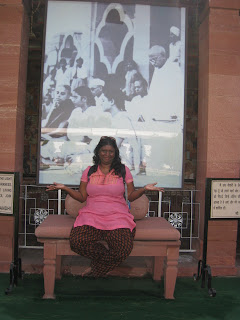


Revered in India as the "Father of the Nation," Mohandas K. Gandhi is also a worldwide icon of non-violent political resistance. Gandhi was born in India and studied law in England, then spent 20 years defending the rights of immigrants in South Africa. He returned to India in 1914, eventually becoming the leader of the Indian National Congress. At the time, India was part of the British Empire, and Gandhi urged non-violence and civil disobedience as a means to independence. His public acts of defiance landed him in jail many times as the struggle continued through World War II. In 1947 he participated in the postwar negotiations with Britain that led to Indian independence. He was shot to death by a Hindu fanatic the next year. An advocate of simple living, Gandhi ate a vegetarian diet and made his own clothes; the spinning wheel became a symbol of his uncluttered lifestyle. His autobiography, The Story of My Experiments With Truth, was published in 1927. His birthday, October 2nd, is a national holiday in India.
Gandhi is often called Mahatma -- the Hindu term for "great soul"... Gandhi wed Kasturba Makhanji in 1883, in an arranged marriage; he was 13 at the time. They had five children and remained married for nearly 61 years, until her death in 1944... Among his many famous quotes is the saying, "An eye for an eye will make the whole world blind














